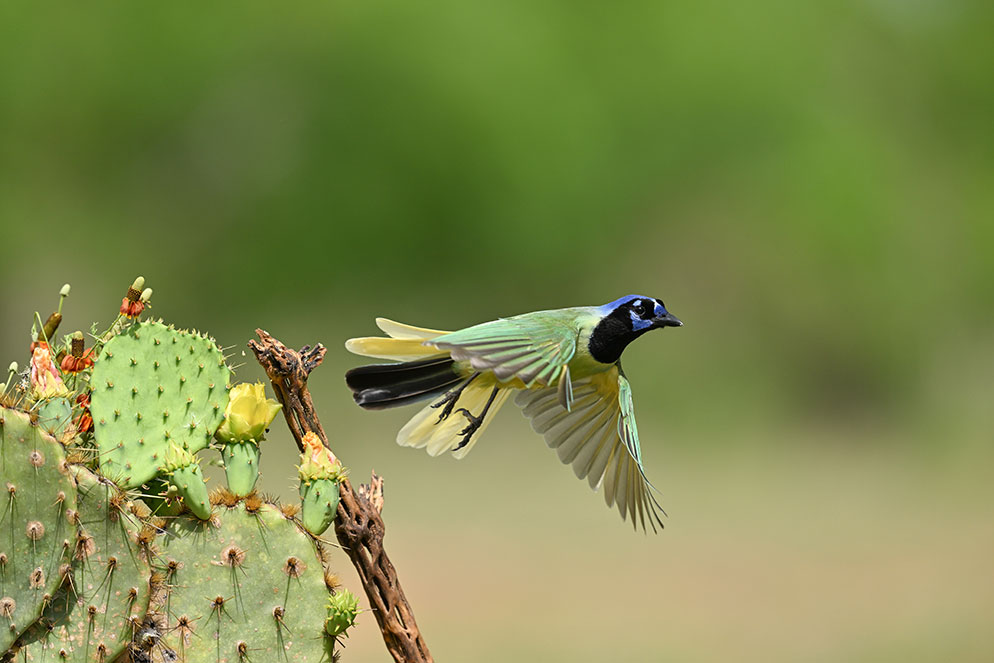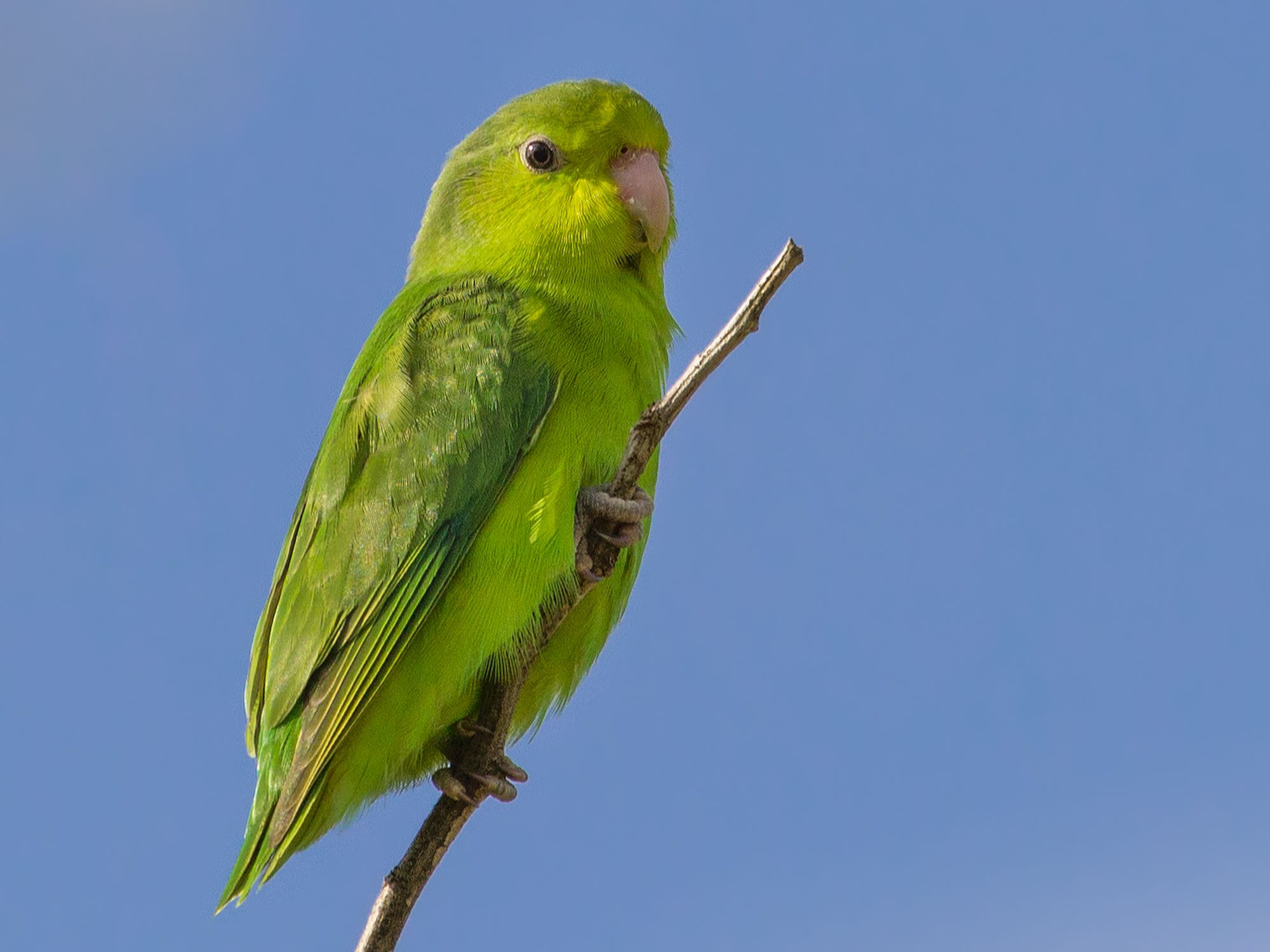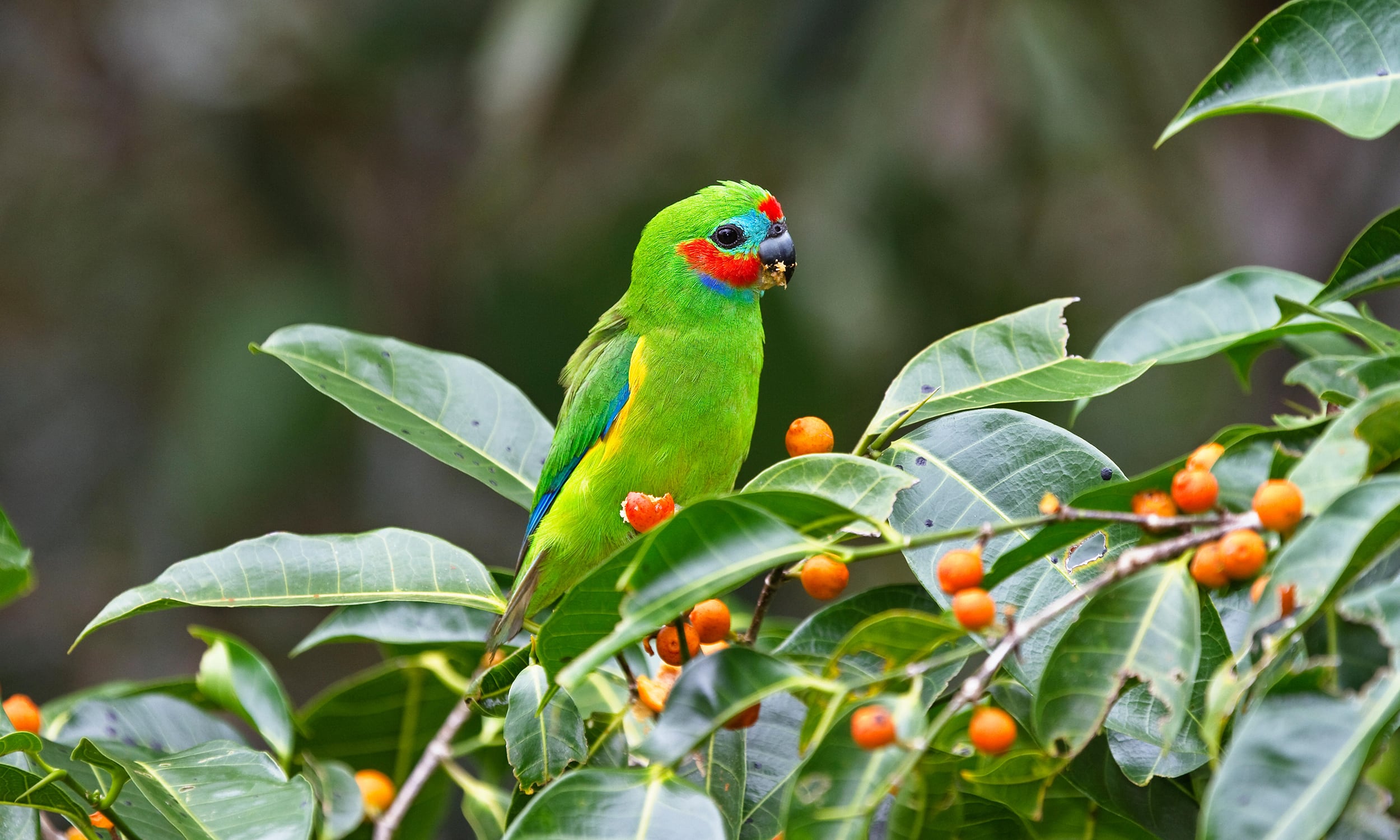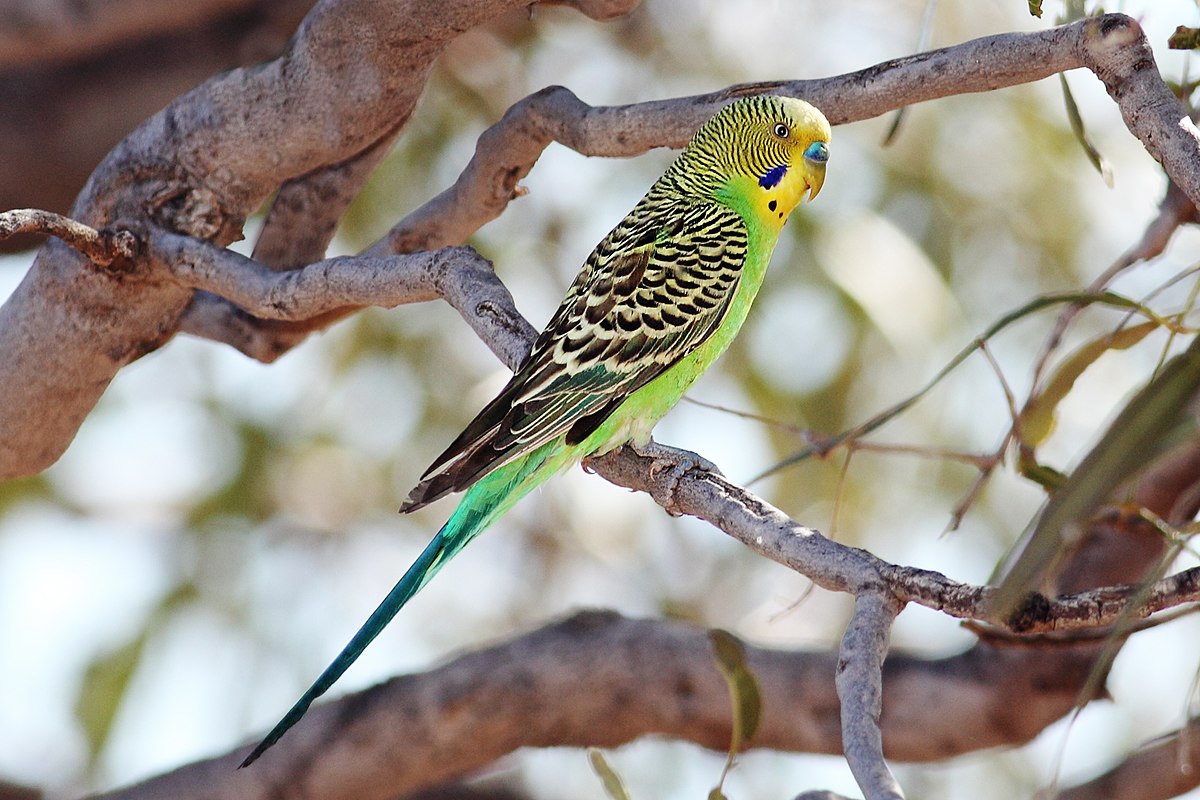Green birds are a fascinating and diverse group of avian creatures. While the color green is commonly associated with parrots and parakeets, it is actually found in a range of birds throughout the Western Hemisphere and the wider world.
In this article, we will explore 10 types of green birds, focusing on their unique characteristics, habitats, and conservation status. Whether you are a bird enthusiast or simply appreciate the beauty of nature, this list is sure to captivate and inspire you. So sit back, relax, and enjoy the stunning world of green birds.
You are reading: 10 Types Of Green Birds

10 Types Of Green Birds
Pacific Parrotlet

The Pacific Parrotlet, also known as Lesson’s Parrotlet or the Celestial Parrotlet, is a species of small parrot in the family Psittacidae. These colorful and intelligent birds are the smallest members of the parrot family, often referred to as “pocket parrots” due to their size.
Here are some key features and facts about the Pacific Parrotlet:
– Description: The Pacific Parrotlet is a small green parrot originating from South America. A typical specimen is 11-14 centimeters (4.3-5.5 inches) long and weighs 30 grams or more. Wild Pacific Parrotlets have a green body with a dusty grey cast, a bright green mask, and a pinkish beak. Males are sexually dimorphic, possessing shades of blue on their wings, which can vary in intensity from a bright cobalt blue to a pale, almost lavender shade of blue on American birds.
– Habitat: Pacific Parrotlets are found in Central America and South America, with the highest prevalence in Peru and Ecuador. They inhabit tropical forests and are known to gather in flocks.
– Personality and Care: These birds are spirited and can become aggressive if not handled regularly. However, their small size and quiet nature make them ideal pets for people living in apartments or condos. While they can learn to talk, they are not known for being big talkers. Pacific Parrotlets have a life expectancy of 20 to 30 years in captivity.
– Conservation Status: The Pacific Parrotlet is not currently listed as a threatened species. However, habitat loss and the pet trade can pose challenges to their population in the wild.
Double-eyed fig parrot

H7X9RH Double-eyed Fig-Parrot (Cyclopsitta diophthalma) feeding on figs, Daintree National Park, North Queensland, Queensland,
The Double-eyed Fig Parrot, also known as the Blue-faced Fig Parrot, Red-faced Fig Parrot, Dwarf Fig Parrot, and Two-eyed Fig Parrot, is a small and colorful parrot species.
Here are some key features and facts about the Double-eyed Fig Parrot:
– Description: The Double-eyed Fig Parrot is the smallest parrot in Australia, with an average total length of about 14 centimeters (5.5 inches). Most subspecies of this parrot are sexually dimorphic, with males having more red (less silvery and blue) on the face than females. They are predominantly green with a very short tail, a disproportionately large head and bill, and red and blue markings on the face.
– Habitat: These parrots primarily inhabit forests on New Guinea and nearby islands. However, they are also found in isolated communities along the tropical Australian coast, east of the Great Dividing Range.
– Conservation Status: The Double-eyed Fig Parrot is not currently listed as a threatened species. However, the Coxen’s Fig Parrot, a subspecies of the Double-eyed Fig Parrot, is facing challenges in Southeast Queensland and Northern New South Wales.
– Interesting Fact: The Double-eyed Fig Parrot’s small size and unique appearance have made it a favorite among bird enthusiasts. Early explorers may have found these birds particularly intriguing, as they were likely accustomed to larger, more common parrot species.
Budgerigar

The Budgerigar, also known as the common parakeet, shell parakeet, or budgie, is a small, long-tailed, seed-eating parrot. Here are some key features and facts about Budgerigars:
– Description: Budgerigars are naturally green and yellow with black, scalloped markings on the nape, back, and wings. However, they have been bred in captivity to exhibit a variety of colors, including blues, whites, yellows, greys, and even with small crests. Juveniles are similar to adult birds but are duller and have a dark brown eye, which turns white or yellow in adults.
– Habitat: Budgerigars are nomadic and can be found in most open habitat types, but they are seldom far from water. They are native to Australia and are known to form very large flocks, occasionally numbering in the tens of thousands, after a season of abundant rainfall and food. Flocks are usually much smaller, ranging from as few as three individuals to several hundred.
– Popularity as Pets: Budgerigars are one of the most popular pets in the world, ranking just behind dogs and cats. They are small, inexpensive, and can be trained to mimic human speech if properly trained. These affectionate and cute birds make charming companions for pet owners.
– Conservation Status: In the wild, Budgerigars are not currently listed as a threatened species. However, their populations can be affected by factors such as habitat loss and the pet trade.
Superb Fruit Dove
Read more : 8 Types Of Blue Birds In Washington State To Watch
The Superb Fruit Dove, also known as the Purple-crowned Fruit Dove, is a medium-sized and colorful bird belonging to the family Columbidae. Here are some key features and facts about the Superb Fruit Dove:
– Description: The Superb Fruit Dove is sexually dimorphic, with males and females exhibiting distinct appearances. Males are brightly colored, with a fiery orange nape, green ears, and a purple crown. They have a grey breast, a wide dark blue band separating the abdomen, olive green wings with dark spots, and a white-tipped tail. Females, on the other hand, are mostly green, with a white abdomen, blue wing tips, a light blue breast, and a small dark blue spot on the back of the head. Both sexes have yellow eyes and eye-rings.
– Habitat: These doves are found in the rainforests of Australia, New Guinea, and nearby islands. They inhabit the tree canopy and are known for their compact size, short rounded wings, and short tail.
– Frugivorous Diet: The Superb Fruit Dove is a highly specialized frugivore, meaning it primarily feeds on fruits. Its diet consists of a variety of fruits, including figs, berries, and other soft fruits.
– Conservation Status: The Superb Fruit Dove is not currently listed as a threatened species. However, its population can be affected by habitat loss and fragmentation, as well as the introduction of invasive species. Efforts to protect and conserve its rainforest habitat are crucial for the long-term survival of this species.
Green catbird
The Green Catbird (Ailuroedus crassirostris) is a species of bowerbird found in subtropical forests along the east coast of Australia, from southeastern Queensland to southern New South Wales.
Here are some key features and facts about the Green Catbird:
– Description: Green Catbirds are large, stout birds with a stocky build. They have a brilliant emerald green back, wings, and rump, with very conspicuous pure white spots at the tips of the tertiaries and secondaries. The crown, nape, and face are dusky, and they have a white bill and red eyes. Juveniles are duller in color.
– Habitat: These birds inhabit temperate and subtropical rainforests, as well as paperbark and sometimes adjacent eucalypt forests. They are often found in the mid to upper canopy, moving from tree to tree in pairs or small groups.
– Diet: Green Catbirds primarily feed on fruit, including figs, flowers, and other plant material. During the breeding season, they have been known to kill baby birds to feed their young, and they may also consume small reptiles.
– Communication: Green Catbirds are known for their cat-like mewing call, which is sometimes likened to the cry of a human baby.
– Breeding Behaviors: Although they belong to the bowerbird family, the males of this species do not build bowers. They only mate with one female and help her defend and feed their offspring.
– Conservation Status: The Green Catbird is not currently listed as a threatened species. However, its population can be affected by habitat loss and fragmentation. Efforts to protect and conserve its rainforest habitat are crucial for the long-term survival of this species.
Hawaiian Honeycreeper
The Hawaiian Honeycreeper, also known as ‘I’iwi (Drepanis coccinea), is a group of small birds endemic to the Hawaiian Islands. Here are some key features and facts about the Hawaiian Honeycreeper:
– Description: The ‘I’iwi is one of the most beautiful of the extant Hawaiian honeycreepers, with both males and females being vermillion red, black tail and wings, and a long, decurved pink bill. They are closely related to the cardueline finches, which include birds such as goldfinches, canaries, siskins, and crossbills.
– Habitat: These birds are found in the forests of the Hawaiian Islands and are known for their remarkable evolutionary radiation, diversifying in the manner of the isolated mid-Pacific environment. They often fly long distances in search of flowering ‘ōhi’a (Metrosideros polymorpha) trees and are important ‘ōhi’a pollinators.
– Diet: The ‘I’iwi’s diet consists primarily of nectar from a variety of native and non-native flowers, as well as insects and spiders. They have evolved special feeding habits and beak shapes to fill different niches found on specific islands within the Hawaiian archipelago.
– Conservation Status: Habitat destruction and the introduction of foreign birds and mammals have led to the extinction of at least 8 of the original 23 species of Hawaiian Honeycreepers, with most of the survivors being endangered. The ‘I’iwi is listed as Endangered on O’ahu, Moloka’i, and Lāna’i, with a possibly extinct status on Lāna’i.
– Cultural Significance: Native Hawaiians created feather capes using hundreds of thousands of ‘I’iwi feathers, which signified power and prestige. These birds are an important part of the cultural and ecological heritage of the Hawaiian Islands.
Glistening-green Tanager
The Glistening-green Tanager (Chlorochrysa phoenicotis) is a species of bird in the family Thraupidae, found in Colombia and Ecuador. Here are some key features and facts about the Glistening-green Tanager:
– Description: Male Glistening-green Tanagers are almost entirely bright glistening emerald green, with small gray patches behind and below the eye and another on the shoulders. Females are slightly duller than males. They are brilliantly colored and have small red and white spots on their wings.
– Habitat: These tanagers are primarily found in subtropical or tropical moist montane forests, specifically on the Pacific slopes of Colombia and northwest Ecuador. They inhabit wet forests between 700 and 2200 meters in elevation.
Read more : Can Baby Birds Eat Strawberries?
– Diet: The Glistening-green Tanager’s diet consists of a variety of fruits, insects, and nectar. They play an important role in seed dispersal and pollination within their forest habitats.
– Conservation Status: While the population size of the Glistening-green Tanager is unknown, its trend is believed to be decreasing. However, it is not currently listed as a threatened species, as it does not approach the thresholds for Vulnerable under the range size criterion. Efforts to protect its cloud forest and tall second growth habitats are important for its long-term survival.
Green Kingfisher
The Green Kingfisher (Chloroceryle americana) is a species of “water kingfisher” found in the subfamily Cerylinae of the family Alcedinidae. Here are some key features and facts about the Green Kingfisher:
– Description: The Green Kingfisher is a small, green-and-white bird with a dark glossy green upper body, white throat, collar, and spots on its wings. It has a relatively large bill and a conspicuous white collar. The male can be distinguished by its rufous breast.
– Habitat: This species is found from southern Texas in the United States, south through Central America, and in every mainland South American country except Chile and Trinidad and Tobago. It inhabits a variety of freshwater habitats, including streams, rivers, ponds, and mangroves.
– Diet: Green Kingfishers primarily feed on small fish, crustaceans, and aquatic insects. They are known for their distinctive hunting behavior, which involves perching on low branches or rocks near the water’s edge and diving into the water to catch their prey.
– Conservation Status: The Green Kingfisher has an extremely large range and does not approach the thresholds for Vulnerable under the range size criterion. However, it may have declined in parts of Texas due to the loss of streamside habitat. Efforts to protect and restore streamside habitats are important for the conservation of this species in certain areas.
Green Jay
The Green Jay (Cyanocorax luxuosus) is a species of New World jays found in Central America and southern Texas. Here are some key features and facts about the Green Jay:
– Description: Green Jays are about 27 cm (11 in) long and have variable colors across their range. They typically have blue and black heads, green wings and mantle, bluish-green tails, black bills, yellow or brown eye rings, and dark legs. They are stunning and unmistakable birds with their green and yellow plumage and bold black-and-blue head pattern.
– Habitat: These jays inhabit a variety of habitats, including forests, woodlands, and scrublands. They are often found in the vicinity of water sources such as rivers and streams.
– Diet: The Green Jay’s diet consists of arthropods, vertebrates, seeds, and fruit. They are known to be opportunistic feeders and will take advantage of a wide range of food sources.
– Nesting: Green Jays typically build their nests in thorny bushes, and the female is responsible for incubating the clutch of three to five eggs.
– Conservation Status: The Green Jay is a common species with a wide range, and the International Union for Conservation of Nature has rated its conservation status as being of “least concern”. However, habitat loss and fragmentation can still pose a threat to local populations. Efforts to protect and restore their habitats are important for their long-term survival.
Green Parakeet
The Green Parakeet (Psittacara holochlorus), also known as the Green Conure or Mexican Green Conure, is a New World parrot endemic to Mexico, although its taxonomy and range are still subject to some debate. Here are some key features and facts about the Green Parakeet:
– Description: The Green Parakeet is a medium-sized parrot with a bright green plumage and a long, pointed tail. Its bill is dull pink, and some birds may have red speckling on their necks, but their overall plumage is uniform. The nominate subspecies, P. h. holochlorus, is the most widely recognized form, while the subspecies P. h. strenuus has yellowish underparts and scattered orange/red feathers on the throat and neck of some individuals.
– Habitat: This species occurs in North and Central America, from the southernmost tip of Texas in the United States, south to northern Nicaragua. It inhabits a variety of habitats, including forests, woodlands, and urban areas.
– Diet: Green Parakeets feed on a variety of fruits, seeds, and vegetation. They are known to forage in flocks, often visiting fruiting trees and agricultural fields in search of food.
– Conservation Status: The Green Parakeet is listed as a species of least concern by the International Union for Conservation of Nature (IUCN). However, local populations may face threats from habitat loss and capture for the pet trade. Efforts to protect their habitats and regulate the pet trade are important for their long-term conservation.
FAQS
1. How many types of green birds are there?
There are numerous types of green birds, but we will focus on 10 different species in this article.
2. Are green birds always completely green?
Birds usually have a mixture of colors, and a bird with purely green feathers is rare. Some birds may change color during their mating season and are not green all year.
3. Do green birds’ colors fade with different angles of light?
The green color of a green bird is the result of pigment and not a trick of the light. The different shades of green, such as emerald green, lime green, chartreuse, or yellow-green, won’t fade because of the viewing angle or light.
4. Where are green birds typically found?
Like other vividly colored birds, different types of green birds tend to be found in the tropics, but not exclusively.
5. What are some examples of green birds?
The 10 types of green birds we will discuss in this article are the Amazon Parrot, Conure, Budgerigar, Green-cheeked Conure, American Robin, Yellow-chevroned Parakeet, Pacific Parrotlet, Double-eyed Fig Parrot, Superb Fruit Dove, and Green Jay.
Source: https://petstutorial.com
Category: Birds










